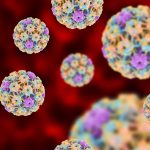Naturopathic Approach to Dementia
Tolle Totum
Sara Thyr, ND
Most people have been affected by someone with dementia, either a family member or a close friend, or possibly a patient. There are few illnesses that create such exquisite hardship with family and friends. Alzheimer’s disease (AD) is the most common form of dementia, consisting of 60-80% of cases.1 In the United States 5.2 million people over age 65 have AD.1 Projections have this number up to 6.7 million by 2025.2 Among seniors over 80 years old, 1 in 3 suffers from dementia. As life expectancies continue to rise, the impact of this will continue to be more and more daunting. The exciting thing is this: naturopathic doctors are expertly trained to significantly help people with this horrific disease.
Risk Factors
Three factors substantially increase one’s risk for dementia: age, sex, and family history. Women represent 65% of diagnosed cases of dementia.1 Among people over 71 years old, 16% of women have dementia, while only 11% of men have it.1 Most cases of AD are among those over 65 years of age.1 If people have a parent or a sibling with Alzheimer’s disease, they are more likely to develop it themselves.1
The most common genetic risk factor involves the ApoE4 allele.3 Women with 1 copy of the ApoE4 allele are more likely to develop AD, while those with 2 copies are substantially more likely.3 Men who are homozygous for ApoE4 are more likely to develop AD.3 The Apo E lipoprotein is a cholesterol carrier protein that helps to repair injury in the brain.4 In AD patients, the cleaving and removal of used-up proteins is hindered, and because of this, beta amyloid plaques begin to form. This process – along with tau proteins, which can damage neurons and keep them from functioning properly (neurofibrillary tangles) – contribute to the symptoms of dementia, mainly loss of memory and difficulty learning new information.4
Familial AD with early onset is considered when the genes that encode for presenilin 1 (PSEN1) and presenilin 2 (PSEN2) are present. Such individuals develop AD at a much younger age, usually before age 65. But this constitutes a very small percentage of cases – less than 1%.4
Use of certain medications confers greater risk for AD as well. These include long-term use of some sleep medications – zolpidem, in particular,5 also long-term use of proton-pump inhibitors6 and anticholinergic drugs.7 Regarding the use of statins, the data is mixed in terms of risk versus benefit. Reports of statins causing cognitive impairment appear to be dose-dependent and reversible upon discontinuation; this is likely dependent on the lipophilic nature of the given statin. Other studies have shown that statins may actually help prevent dementia, particularly if they are prescribed to lower cholesterol in mid-life (rather than only late in life).8
Elevated blood sugar also increases the risk of AD.9 Some have referred to AD as type 3 diabetes, because of the great impact that blood sugar has on the disease progression. Authors note that elevated blood glucose levels can increase risk for dementia even in people without diabetes. A number of my patients have seen improvement in cognitive symptoms by just cutting out all refined sugar from their diets and managing overall blood glucose more effectively. One had improvement in his Montreal Cognitive Assessment (MoCA) score in just 3 months.
There is a good deal of research linking hearing loss with development of mild cognitive decline and dementia.10
Other modifiable risk factors include smoking, obesity, hypertension, and diabetes.7
There are, of course, environmental risk factors as well. One recent systematic review article that looked at 60 different studies found that risk for dementia was increased by air pollution, aluminum, arsenic, pesticides, vitamin D deficiency, and electric and magnetic fields.11 It is likely that more environmental links will be found as more well-constructed research studies are produced.
Inflammation and oxidative stress play a significant role in dementia pathogenesis.12 Currently, there is no clear evidence for the mechanism; however, the build up of ɑ-synuclein and amyloid-β (which form the plaques that bear the name), along with the excessively phosphorylated tau protein that causes neurofibrillary tangles, are linked to oxidative stress.
Neuroinflammation caused by the overproduction of inflammatory cytokines by the microglial cells brings to light the role of innate immunity in the disease process.13 The acute neuroinflammation is caused by the immediate activation of glial cells in response to a stimulus such as reactive oxygen species (ROS) or other neuronal damaging activators. The microglial cells are working to repair the damage that is being caused. If the stimuli stay in place for too long, then the proinflammatory response becomes chronic and additional damage takes place that is more difficult to clear out. The microglial cells are a double-edged sword in the neuroinflammatory process: they are there to heal damaged neurons, but they can fatally damage neurons in their attempt to clean up.
Signs, Symptoms, & Diagnosis
The Alzheimer’s Association lists the following signs and symptoms of early Alzheimer’s disease14:
- Memory loss that disrupts daily life
- Challenges in planning or solving problems
- Difficulty completing familiar tasks at home, at work, or at leisure
- Confusion with time or place
- Trouble understanding visual images and spatial relationships
- New problems with words in speaking and writing
- Misplacing things and losing ability to retrace one’s steps
- Decreased or poor judgment
- Withdrawal from work or social activities
- Changes in mood or personality
Mild Cognitive Impairment (MCI)
This interruption in cognitive function is such that does not meet the criteria for dementia, yet will involve a measurable deficit in cognition in at least 1 domain. While those affected have some impairment, they do not have the interruption in the activities of daily living that those with dementia experience. It is essential to be well versed in the subtle differences between cognitive impairments of normal aging and those of dementia.15 MCI is experienced by 15-20% of people at least 65 years of age. Although individuals with MCI are more likely to develop Alzheimer’s disease, MCI is no guarantee that they will go on to develop the disease.16
Diagnostic Criteria for Dementia
Most people with dementia do not self-report memory loss. That is always reassuring to patients who come in very worried about their own cognitive function. Self-reported memory loss does not correlate with diagnosis of dementia.17
For a dementia diagnosis, there must be demonstrated decline in 1 or more cognitive domains18:
- learning and memory
- language
- executive function
- complex attention
- perceptual-motor function
- social cognition
This decline must be acquired and be significant compared to prior function. And the deficit of cognitive function must interfere with the activities of daily living (ADL) and cause a decrease in the person’s independence. In diseases such as AD, the decline is typically insidious and progressive, tracked via their medical history or a series of mental status exams. These declines should not be explained by other mental health disorders.
Brain Health Questionnaires
There are a number of mental health status questionnaires available for office use. The mostly commonly used ones are the Mini Mental Status Exam (MMSE) and the Montreal Cognitive Assessment (MoCA). I find it very helpful to give one of these tests to patients early in our working relationship. By doing this you can see where they are and then tailor a program to fit their needs, as well as track their progress. MoCA test developers offer a helpful online training program that certifies for a 2-year period.19 The MoCA test has components that can be utilized to understand which aspects of learning and memory have been affected.
Can Saliva Diagnose Dementia?
A 2017 research study took saliva from 80 people with moderate dementia and 80 age-matched controls.20 Investigators tested subjects’ saliva for salivary flow, antioxidants, advanced glycation end-products (AGE), and oxidative damage products. They found that the patients with dementia had lower salivary flow compared to controls, as well as higher levels in their saliva of the markers for AGE and oxidative damage, and lower levels of antioxidants. The authors concluded that dementia is associated with decreased secretion from the salivary glands, and lower salivary redox homeostasis that parallels a relative decrease in MMSE scores.20 Although it is too early to bank on this as diagnostic criteria, the implications are very interesting to consider.
As a naturopathic doctor, there are many other areas and lab tests that one may want to order for a given patient. My guiding principal is always to find and treat any underlying cause. Checking for toxic heavy metal burden, hormones that are out of balance (including thyroid and adrenals), blood sugar imbalances, mold exposure, food allergies, and nutrient deficiencies will aid in a more thorough treatment plan.
Prevention & Treatment Strategies
The Magic of Exercise
Physically active adults see a 50% reduced risk for Alzheimer’s disease.21 While there are some significant barriers for older adults to exercise, such as limited ability and economics, they are worth working to overcome, because there are myriad benefits of exercise.22 Exercise increases BDNF (brain-derived neurotrophic factor). In a meta-analysis of 52 studies, including both animal and human, 100% of them showed an increase in BDNF from even 1 bout of exercise [that increased heart rate].23 BDNF increases the neuroplasticity of brain neurons.23 Aerobic exercise, getting one’s heart rate up into the 75-80% of max, is the most useful for those with mild cognitive impairment to prevent moving into AD,24 as well as for improving memory and skills in those who already have AD.25 Recent studies refute the causal relationship between exercise and cognition,26 postulating that the MCI and dementia are causing the decreased activity, possibly pre-diagnosis, rather than the other way around. As exercise can impact other definite risk factors for dementia, such as diabetes, hypertension, and obesity, keeping middle aged and older patients moving for life is a worthwhile goal.
Sleep: Not Just a Good Idea; It’s Critical
Scientists have recently discovered the glymphatic system in the brain. Similar to the body’s lymphatic system, glymphatics work to clean out detritus in the brain, such as beta-amyloid plaques and other inflammation that is associated with symptoms of dementia.27 The trick to the glymphatics is that they only work while we are asleep. So when we don’t allow enough time to get plenty of rest, or don’t sleep well for any number of reasons, we may be robbing the clean-up crew of the brain’s precious time to clear out the accumulation.
The Meditation Miracle
Meditation has been proven to be helpful for numerous health issues, so I discuss it with nearly every patient. There is an abundance of evidence on the benefits of meditation as it pertains to brain health, although the mechanism has not been clearly established. One study examining a mindfulness-based meditation program in people with dementia showed resilience in emotional responses, such that neuroplasticity was improved.28
Mindfulness meditation techniques have shown to improve memory in people with cognitive decline, as well as in those of highly stressed caregivers29 – a population that is also at risk of developing AD.30 Meditation improves sleep, reduces anxiety and depression, upregulates immune system genes, downregulates inflammatory genes, improves genes that regulate insulin and glucose, and increases telomerase by 43% (the highest increase ever recorded).29 In a meta-analysis of mind-body practices, investigators found improvements in behavioral and psychological symptoms in people with dementia.31 Another review examined 13 studies including people with and without cognitive impairment, either engaged in a wide variety of meditation practices or not meditating (controls). Results revealed significant increases in grey matter volume in the people who meditated.32 The research regarding the mechanism for this finding is limited, but preliminary evidence indicates that meditation can offset the grey matter atrophy that is linked with dementia.32
One of my favorite studies included 127 people with a mean age of 70.69.33 Each received weekly personalized cognition stimulation, neurofeedback training, and counseling on eating a Mediterranean diet, and they took omega-3 fatty acids, increased their fitness, and practiced mindfulness meditation. Eighty-four percent of the patients showed statistically significant improvements in cognitive function. Among 17 participants who had an MRI, 12 showed either no atrophy or actual hippocampal growth above baseline.33 These findings reinforce the way that we naturally think as naturopathic doctors: it takes a whole program, focused on diet, lifestyle, supplements, and meditation, to really make a difference in cognitive function.
Evidence for Supplements
Fans of curcumin have likely already heard about the recent research that came out of UCLA last year. Investigators studied non-demented individuals taking a bioavailable form of curcumin or placebo twice daily for 18 months.34 Those taking the curcumin experienced significant attention and memory benefits, as well as decreased beta-amyloid and tau protein neurofibrillary tangles, as evidenced on PET scans. Curcumin’s anti-inflammatory properties protect the brain from neurodegeneration.
Docosahexaenoic acid (DHA) is another agent that has proven benefits for cognitive decline, including impairments in working memory, and reduced focus. People who have the ApoE4 allele are known to be at increased risk of dementia.35 Studies have also shown that mice carrying the ApoE4 allele are more likely to have lower brain concentrations of DHA, and that animals with lower brain DHA have behavioral and cognitive deficits.36 Supplementing DHA may stop progression and reverse neurological damage caused by a DHA deficiency.
Resveratrol – present in many foods such as blueberries, dark chocolate, and red wine – has been found in a murine cell-line study to attenuate the activation of microglial cells in the brain.37 This benefit could prevent the proinflammatory aspects of the clean-up conducted by microglial cells from causing neuronal death. Other research points to resveratrol’s ability to help with peripheral glucose metabolism as the likely mechanism for improving cognitive performance, as well as delaying the onset of MCI and its progression to AD.38
Citicoline (aka CDP-choline) is an endogenous intermediary in the biosynthesis of structural phospholipids and brain acetylcholine. A double-blind, randomized, placebo-controlled trial demonstrated citicoline’s effectiveness in people with mild-to-moderate AD.39 This benefit included those with the ApoE4 allele.
Tetrahydrocannabinol (THC), the main psychoactive ingredient in cannabis, has been shown in vitro to be a potent inhibitor of amyloid-β aggregation.40 Research has demonstrated that stimulating the brain’s cannabinoid receptors may offer protection by reducing brain inflammation and restoring neurogenesis.41 Cannabinoids also appear to prevent the neurodegenerative process in AD by reducing microglial activation.42 Researchers have shown that cannabinoids offer a multi-faceted approach for AD treatment by reducing neuroinflammation, providing neuroprotection, and also supporting repair mechanisms needed by the brain, such as inducing neurotrophin expression and neurogenesis.43 In a rat study, cannabinoids were shown to promote growth of neurons in the hippocampus, an area of the brain that is important for learning and memory. According to the investigators, “[C]annabinoids are the only illicit drug that can promote adult hippocampal neurogenesis following chronic administration.”44 Other investigators reported that cannabidiol (CBD) protects neurons better than the antioxidants, tocopherol (vitamin E) and ascorbate (vitamin C).45 Along with supporting cognition and controlling inflammation, cannabinoids offer additional benefits, such as improving sleep and quelling anxiety.46
While prescription medications for AD have shown limited success, there is one made by compounding pharmacies that has shown real promise, and with a much nicer side-effect profile. This is an inhaled combination of ginsenoside Rg3 and nicotinamide riboside, along with ingredients to aid in its solubility and dispersion. Rg3 is one of several triterpene saponins found in Panax ginseng (Asian ginseng) and Panax quinquefolius (American ginseng). It has been shown in animal and cell-line studies to confer neuroprotection and support healthy microglial activity.47-49 Nicotinamide riboside (NR) is a form of vitamin B3 that supports healthy levels of NAD+, and which animal studies have shown offers neuroprotection.50 NR supports neuronal NAD+ synthesis without inhibiting sirtuins – important factors in longevity.50 This has been one of the most impactful prescriptions in my practice; one patient’s MoCA scores improved from 14 to 25 (out of 30) within 6 months of use.
Conclusion
As the population ages, far too many millions of people will either have AD or spend their retirement years caring for a loved one with dementia. Scientists project that as many as 28-million people will have AD by 2050. Thus far, the pharmaceutical options have proven fruitless and often cause severe and intolerable side effects. It is an incredibly exciting time for naturopathic physicians, as our medicine will be truly life-changing for an otherwise hopeless and unrelenting disease.
Moving forward, I recommend that you become comfortable utilizing the mental status questionnaire of your choice. Offer the test in your practice on a regular basis, and utilize this tool to assess patient outcomes. As naturopathic doctors, we have the ability to stop and reverse AD, as well as slow and reverse MCI. In your hands, you hold the key to helping people hold on to their lifetime of memories and family connections.
References:
- Alzheimer’s Association. 2018 Alzheimer’s Disease Facts and Figures. Available at: https://www.alz.org/media/HomeOffice/Facts%20and%20Figures/facts-and-figures.pdf. Accessed May 2, 2019.
- Herbert LE, Scherr PA, Bienias JL, et al. Alzheimer disease in the US population: prevalence estimates using the 2000 census. Arch Neurol. 2003;60(8):1119-1122.
- Riedel BC, Thompson PM, Brinton RD. Age, APOE and sex: Triad of risk of Alzheimer’s disease. J Steroid Biochem Mol Biol. 2016;160:134-147.
- Liu CC, Kanekiyo T, Xu H, Bu Apolipoprotein E and Alzheimer disease: risk, mechanisms and therapy. Nat Rev Neurol. 2013;9(2):106-118.
- Cheng HT, Lin FJ, Erickson SR, et al. The Association Between the Use of Zolpidem and the Risk of Alzheimer’s Disease Among Older People. J Am Geriatr Soc. 2017;65(11):2488-2495.
- Nehra AK, Alexander JA, Loftus CG, Nehra V. Proton Pump Inhibitors: Review of Emerging Concerns. Mayo Clin Proc. 2018;93(2):240-246.
- Richardson K, Fox C, Maidment I, et al. Anticholinergic drugs and risk of dementia: case-control study. BMJ. 2018;361:k1315.
- Schultz BG, Patten DK, Berlau DJ. The role of statins in both cognitive impairment and protection against dementia: a tale of two mechanisms. Transl Neurodegener. 2018;7:5. doi: 10.1186/s40035-018-0110-3.
- Crane PK, Walker R, Hubbard RA, et al. Glucose levels and risk of dementia. N Engl J Med. 2013;369(6):540-548.
- Thomson RS, Auduang P, Miller AT, Gurgel RK. Hearing loss as a risk factor for dementia: A systematic review. Laryngoscope Investig Otolaryngol. 2017;2(2):69-79.
- Killin LO, Starr JM, Shiue IJ, Russ Environmental risk factors for dementia: a systematic review. BMC Geriatr. 2016;16(1):175.
- Novack JP. Autophagy and Proteostasis: A Unifying Theory of Neurodegenerative Disease. J Restor Med. 2017;6(1):3-18. Available at: https://journal.restorativemedicine.org/index.php/journal/article/view/99/119. Accessed May 2, 2019.
- Morales I, Guzmán-Martínez L, Cerda-Troncoso C, et al. Neuroinflammation in the pathogenesis of Alzheimer’s disease. A rational framework for the search of novel therapeutic approaches. Front Cell Neurosci. 2014;8:112.
- Alzheimer’s Association. Stages of Alzheimer’s. 2019. Available at: https://www.alz.org/alzheimers-dementia/stages. Accessed May 2, 2019.
- Peterson RC. Mild cognitive impairment as a diagnostic entity. J Intern Med. 2004;256(3):183-194.
- Alzheimer’s Association. Mild Cognitive Impairment (MCI). 2019. Available at: https://www.alz.org/alzheimers-dementia/what-is-dementia/related_conditions/mild-cognitive-impairment. Accessed May 3, 2019.
- Carr DB, Gray S, Baty J, Morris JC. The value of informant versus individual’s complaints of memory impairment in early dementia. Neurology. 2000;55(11):1724-1726.
- American Psychiatric Association. Diagnostic and Statistical Manual of Mental Disorders, Fifth Edition (DSM-5). Washington, DC: American Psychiatric Association Publishing; 2013.
- Montreal Cognitive Assessment. MoCA Test: The most sensitive cognitive screening tool. 2019. Available at: https://www.mocatest.org/. Accessed May 3, 2019.
- Choromańska M, Klimiuk A, Kostecka-Sochoń P, et al. Antioxidant Defence, Oxidative Stress and Oxidative Damage in Saliva, Plasma and Erythrocytes of Dementia Patients. Can Salivary AGE be a Marker of Dementia? Int J Mol Sci. 2017;18(10). pii: E2205. doi: 10.3390/ijms18102205.
- Laurin D, Verreault R, Lindsay J, et al. Physical activity and risk of cognitive impairment and dementia in elderly persons. Arch Neurol. 2001;58(3):498-504.
- Chen WW, Zhang X, Huang WJ. Role of physical exercise in Alzheimer’s disease. Biomed Rep. 2016;4(4):403-407.
- Loprinzi PD. Does brain-derived neurotrophic factor mediate the effects of exercise on memory? Phys Sportsmed. 2019 Apr 19. doi: 10.1080/00913847.2019.1610255. [Epub ahead of print]
- Song D, Yu DSF, Li PWC, Lei Y. The effectiveness of physical exercise on cognitive and psychosocial outcomes in individuals with mild cognitive impairment: A systematic review and meta-analysis. Int J Nurs Stud. 2018;79:155-164.
- Morris JK, Vidoni ED, Johnson DK, et al. Aerobic exercise for Alzheimer’s disease: A randomized controlled pilot trial. PLoS One. 2017;12(2):e0170547.
- Sabia S, Dugravot A, Dartigues JF, et al, Physical activity, cognitive decline, and risk of dementia: 28 year follow-up of Whitehall II cohort study. BMJ. 2017;357:j2709.
- Verheggen ICM, Van Boxtel MPJ, Verhey FRJ, et al. Interaction between blood-brain barrier and glymphatic system in solute clearance. Neurosci Biobehav Rev. 2018;90:26-33.
- Hölzel BK, Brunsch V, Gard T, et al. Mindfulness-Based Stress Reduction, Fear Conditioning, and The Uncinate Fasciculus: A Pilot Study. Front Behav Neurosci. 2016;10:124.
- Khalsa DS. Stress, Meditation, and Alzheimer’s Disease Prevention: Where The Evidence Stands. J Alzheimers Dis. 2015;48(1):1-12.
- Norton MC, Smith KR, Østbye T, et al. Greater risk of dementia when spouse has dementia? The Cache County study. J Am Geriatr Soc. 2010;58(5):895-900.
- Anderson JG, Rogers CE, Bossen A, et al. Mind-Body Therapies in Individuals With Dementia: An Integrative Review. Res Gerontol Nurs. 2017;10(6):288-296.
- Last N, Tufts E, Auger LE. The Effects of Meditation on Grey Matter Atrophy and Neurodegeneration: A Systematic Review. J Alzheimers Dis. 2017;56(1):275-286.
- Fotuhi M, Lubinski B, Trullinger M, et al. A Personalized 12-week “Brain Fitness Program” for Improving Cognitive Function and Increasing the Volume of Hippocampus in Elderly with Mild Cognitive Impairment. J Prev Alzheimers Dis. 2016;3(3):133-137.
- Small GW, Siddarth P, Li Z, et al. Memory and Brain Amyloid and Tau Effects of a Bioavailable Form of Curcumin in Non-Demented Adults: A Double-Blind, Placebo-Controlled 18-Month Trial. Am J Geriatr Psychiatry. 2018;26(3):266-277.
- Liu CC, Liu CC, Kanekiyo T, et al. Apolipoprotein E and Alzheimer disease: risk, mechanisms and therapy. Nat Rev Neurol. 2013;9(2):106-118.
- Nock TG, Chouinard-Watkins R, Plourde M. Carriers of an apolipoprotein E epsilon 4 allele are more vulnerable to a dietary deficiency in omega-3 fatty acids and cognitive decline. Biochim Biophys Acta Mol Cell Biol Lipids. 2017;1862(10 Pt A):1068-1078.
- Zhang S, Gao L, Liu X, et al. Resveratrol Attenuates Microglial Activation via SIRT1-SOCS1 Pathway. Evid Based Complement Alternat Med. 2017;2017:8791832.
- Pasinetti GM, Wang J, Ho L, et al. Roles of resveratrol and other grape-derived polyphenols in Alzheimer’s disease prevention and treatment. Biochim Biophys Acta. 2015;1852(6):1202-1208.
- lvarez XA, Mouzo R, Pichel V, et al. Double-blind placebo-controlled study with citicoline in APOE genotyped Alzheimer’s disease patients. Effects on cognitive performance, brain bioelectrical activity and cerebral perfusion. Methods Find Exp Clin Pharmacol. 1999;21(9):633-644.
- Eubanks LM, Rogers CJ, Beuscher AE 4th, et al. A molecular link between the active component of marijuana and Alzheimer’s disease pathology. Mol Pharm. 2006;3(6):773-777.
- Wenk GL. Maintaining Memories with Marijuana. July 14, 2010. Psychology Today. Available at: psychologytoday.com/blog/your-brain-food/201007/maintaining-memories-marijuana. Accessed May 3, 2019.
- Ramirez BG, Blázquez C, Gómez del Pulgar T, et al. Prevention of Alzheimer’s disease pathology by cannabinoids: neuroprotection mediated by blockade of microglial activation. J Neurosci. 2005;25(8):1904-1913.
- Campbell VA, Gowran A. Alzheimer’s disease; taking the edge off with cannabinoids? Br J Pharmacol. 2007;152(5):655-662.
- Jiang W, Zhang Y, Xiao L, et al. Cannabinoids promote embryonic and adult hippocampus neurogenesis and produce anxiolytic- and antidepressant-like effects. J Clin Invest. 2005;115(11):3104-3116.
- Hampson AJ, Grimaldi M, Lolic M, et al. Neuroprotective antioxidants from marijuana. Ann N Y Acad Sci. 2000;899:274-282.
- Shannon S, Lewis N, Lee H, Hughes S. Cannabidiol in Anxiety and Sleep: A Large Case Series. Perm J. 2019;23:18-041.
- Joo SS, Yoo YM, Ahn BW, et al. Prevention of inflammation-mediated neurotoxicity by Rg3 and its role in microglial activation. Biol Pharm Bull. 2008;31(7):1392-1396.
- Bao HY, Zhang J, Yeo SJ, et al. Memory enhancing and neuroprotective effects of selected ginsenosides. Arch Pharm Res. 2005;28(3):335-342.
- Mannaa F, Abdel-Wahhab MA, Ahmed HH, Park MH. Protective role of Panax ginseng extract standardized with ginsenoside Rg3 against acrylamide-induced neurotoxicity in rats. J Appl Toxicol. 2006;26(3):198-206.
- Chi Y, Suave AA. Nicotinamide riboside, a trace nutrient in foods, is a vitamin B3 with effects on energy metabolism and neuroprotection. Curr Opin Clin Nutr Metab Care. 2013;16(6):657-661.
 Sara Thyr, ND, obtained her doctoral degree in naturopathic medicine from Bastyr University in Kenmore, WA. Concurrent with her studies at Bastyr, Dr Thyr also completed specialty certification in Naturopathic Midwifery. She is a member of the California Naturopathic Doctors Association and the American Association of Naturopathic Physicians; she is also an international speaker for continuing medical education events for both naturopathic and medical doctors and other health professionals. In her spare time, Dr Thyr enjoys swimming, hiking, gardening, and growing succulents. She is happily married to Geoffrey Smith, and they live in Petaluma, CA, with their cats, CoCo and Rory.
Sara Thyr, ND, obtained her doctoral degree in naturopathic medicine from Bastyr University in Kenmore, WA. Concurrent with her studies at Bastyr, Dr Thyr also completed specialty certification in Naturopathic Midwifery. She is a member of the California Naturopathic Doctors Association and the American Association of Naturopathic Physicians; she is also an international speaker for continuing medical education events for both naturopathic and medical doctors and other health professionals. In her spare time, Dr Thyr enjoys swimming, hiking, gardening, and growing succulents. She is happily married to Geoffrey Smith, and they live in Petaluma, CA, with their cats, CoCo and Rory.










